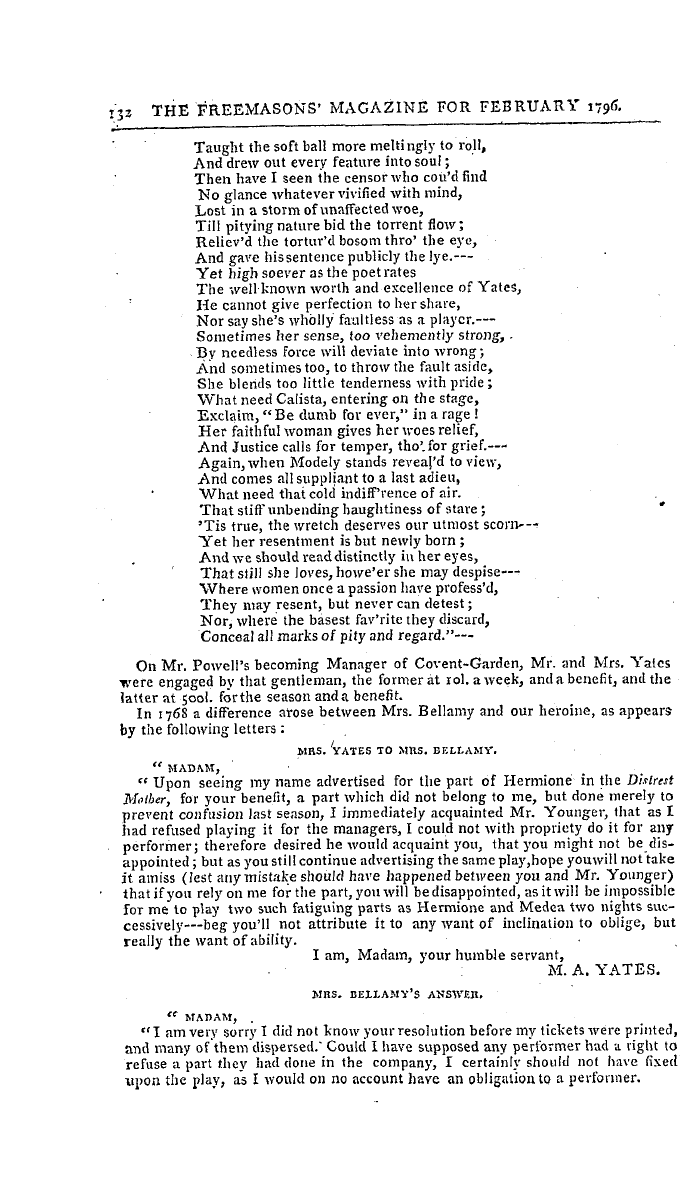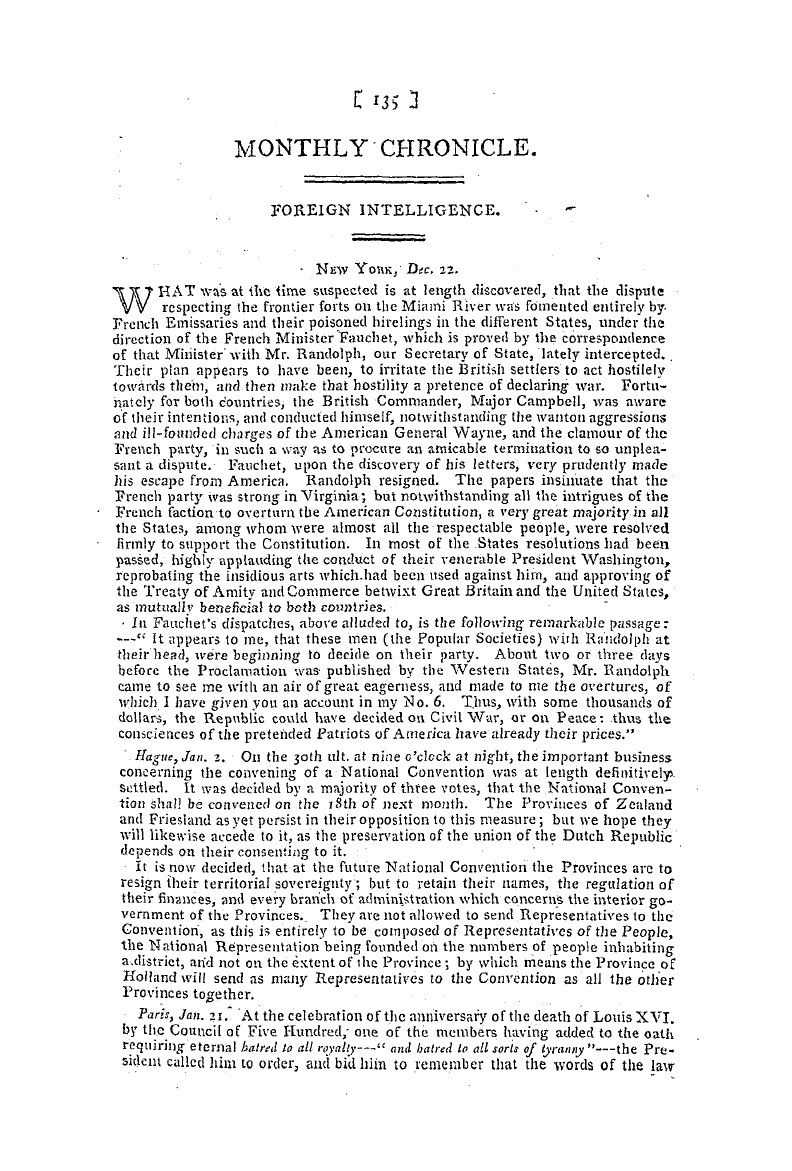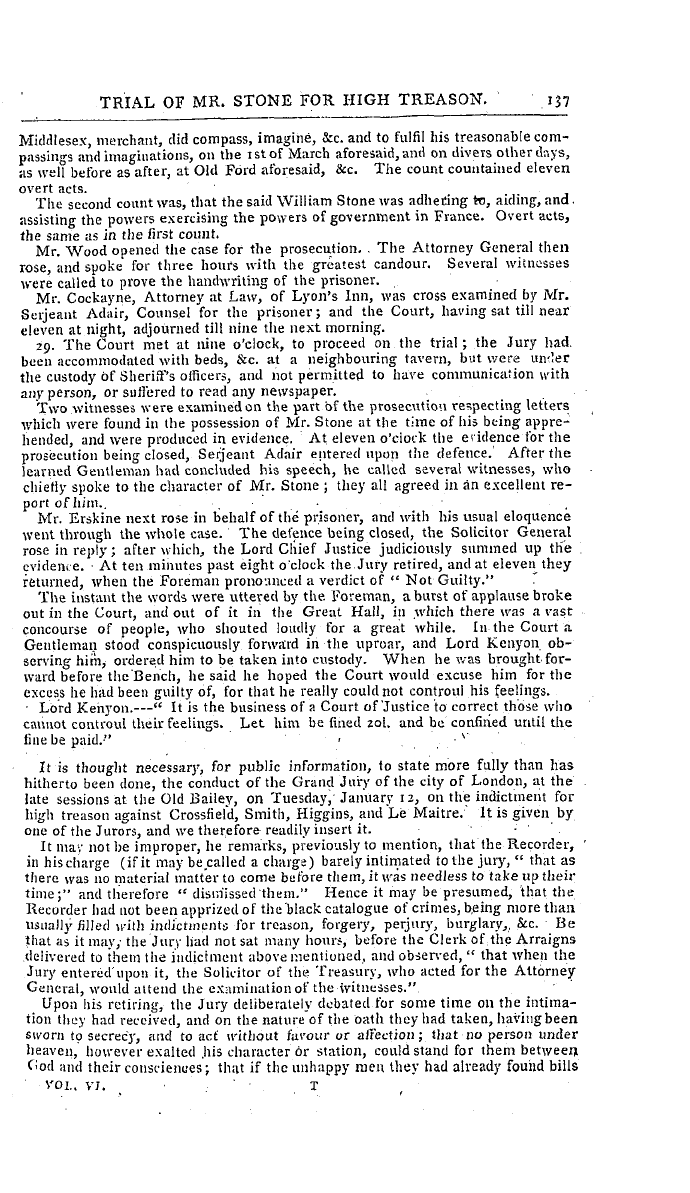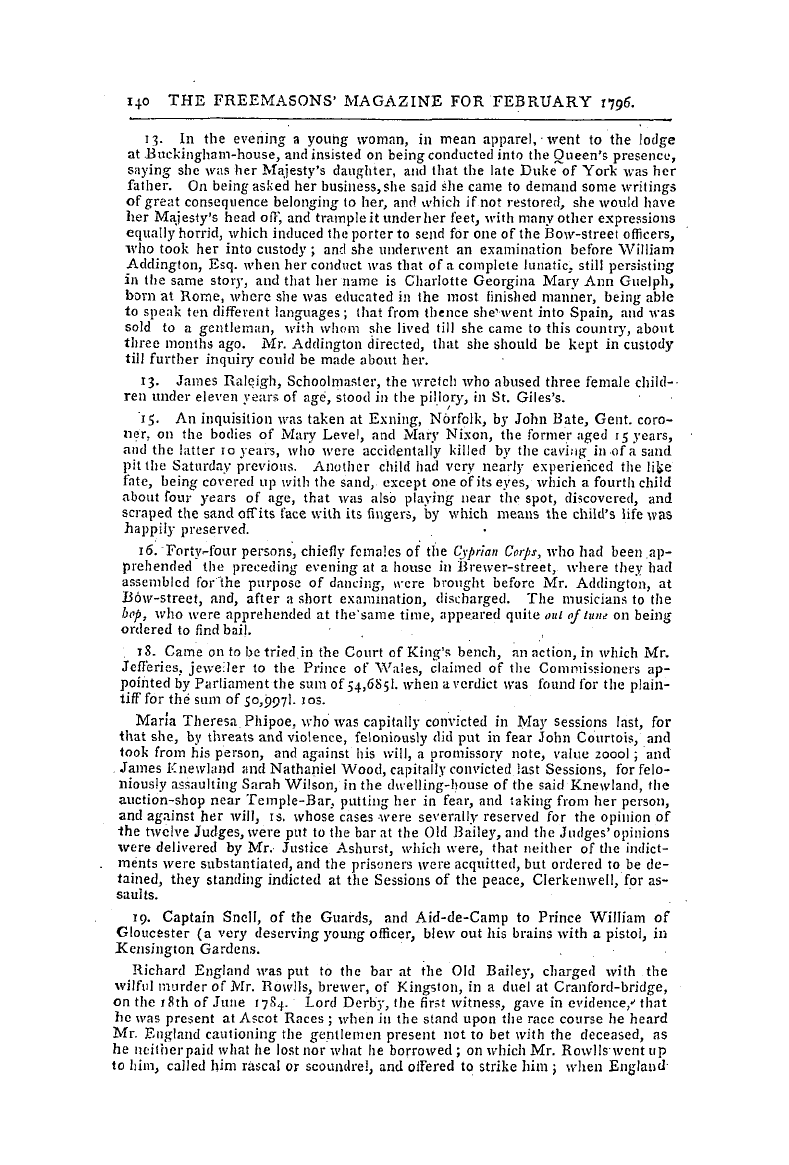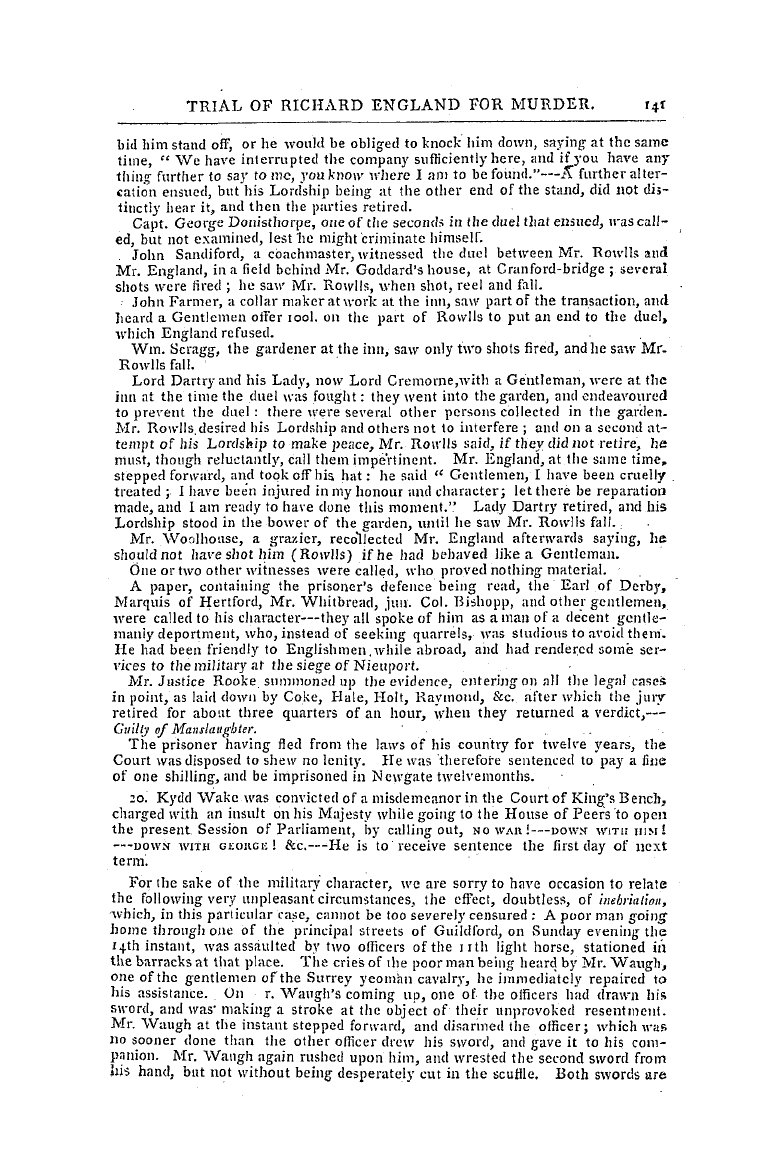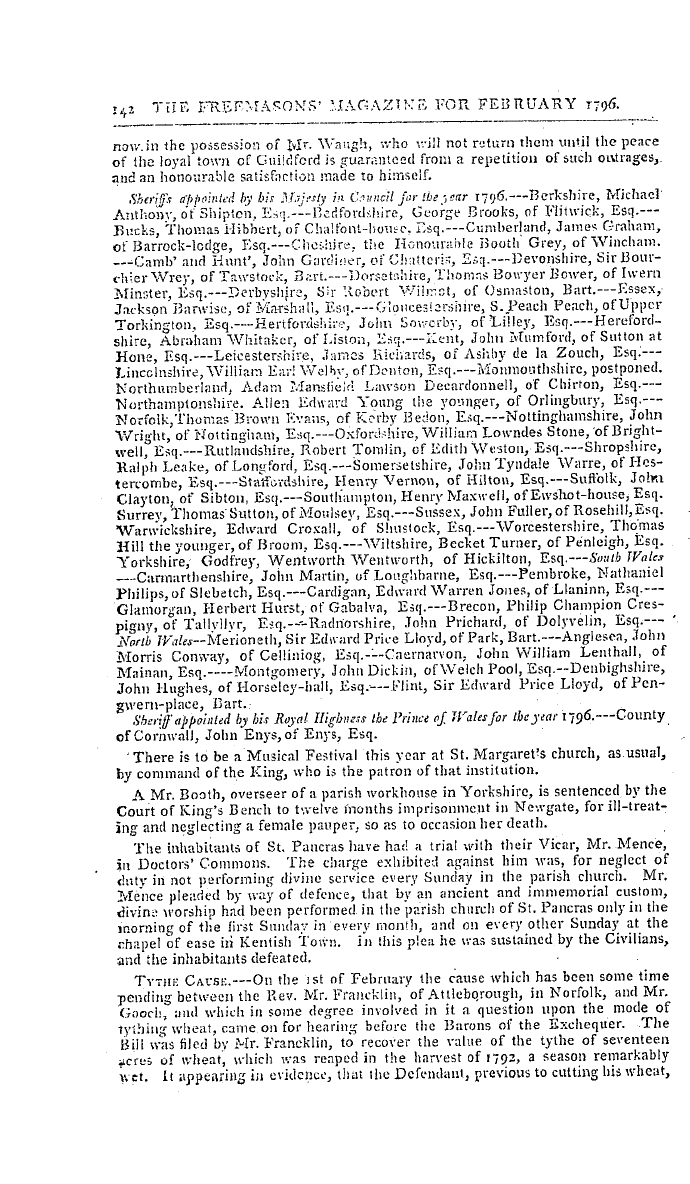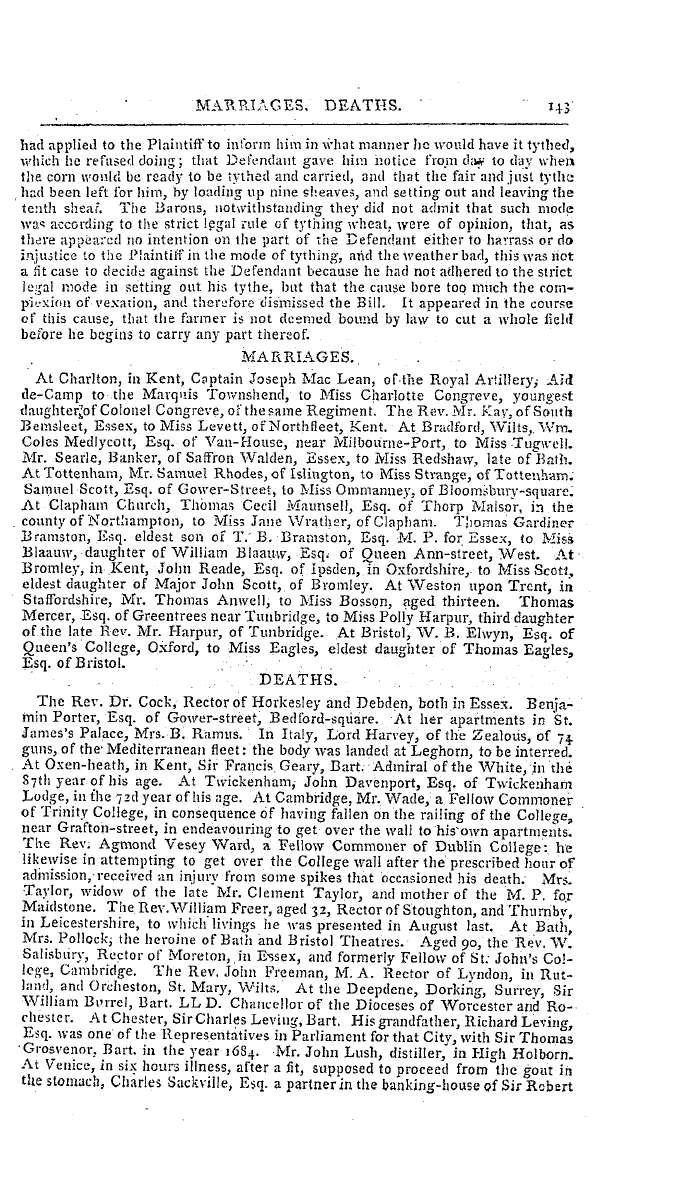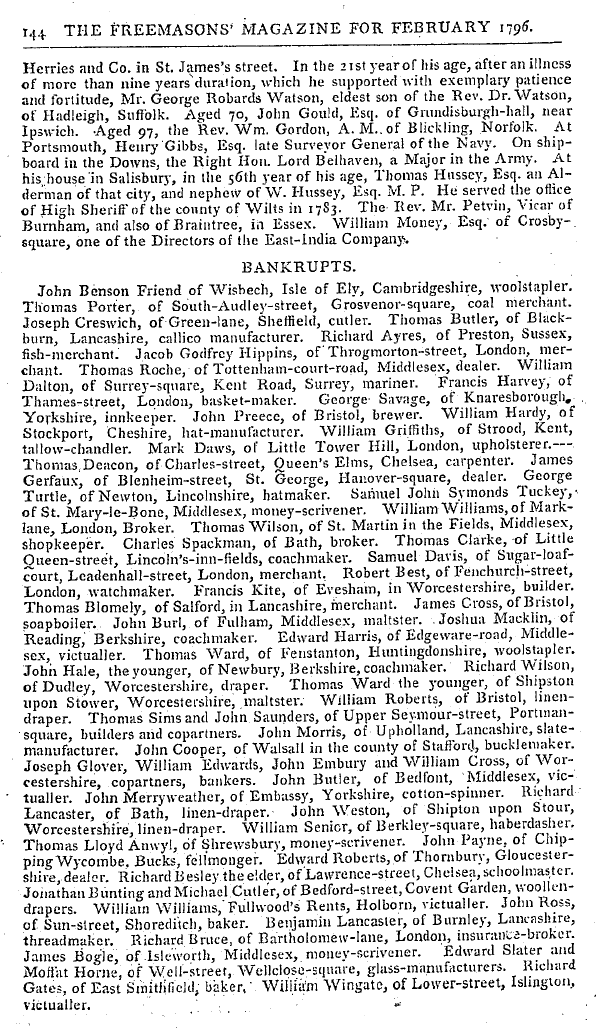-
Articles/Ads
Article HISTORY OF MASONRY. ← Page 2 of 6 →
Note: This text has been automatically extracted via Optical Character Recognition (OCR) software.
History Of Masonry.
orders of that generous conqueror , set fire to the temple . Soon after this sad conflagration , the whole city was levelled with the ground , not one stone being left upon another ; and the conqueror ordered a plough to pass over the ruins thereof , as a testimony of its irrecoverable state' and final desolation , agreeably , . ffa the prophecies that foretold its destruction l Vespasian shut the temple of Janusand built " the temple of Peace .
, ZA . D . 70 . J He raised his famous amphitheatre ; in which the rich Composite order was first used . He ordered the Jewish temple in Egypt to be demolished , and died A . D . 77 . , i . Upon the return of Titus from the overthrow ofthe Jewish nation , he caused a triumphal arch , adorned with splendid engravings and sculptures , to be built ; and soon after , his noble palaces , with the
famous statue of Laocoon of one stone . Domitian built the . temple of Minerva , and rebuilt that of Capitolinus , which he overlaid with plates of gold ; and had all the columns cut out at Athens . Pie also built a palace more rich and grand than that f Augustus , with stately galleries in the portico , beside halls , bathsand beautiful apartments for his women . He died A . D . 63 ;
, succeeded by Nerva , who died in 9 ; , after he had adopted Trajan , Trajan , by his warden , the renowned architect Apollodorus , laid a wonderful bridge over the Danube , built a noble circus and palace , two triumphal arches , and his famous column , that exceeds all admira ^ tion , ; being 128 feet high , and the ascent to the top of it by 123 stairs , with forty-four windows . [ A . D . 114 . ] The ashes of this emperor ,
inclosed in an urn , are deposited on the top of this stately , column ; which is moreover adorned with figures in basso relievo , ascending in spiral lines from the base to the capital ; representing the military atchievements of that emperor against the Dacias . The Roman columns were not raised without some mystical signification , or historical reference ; and in this respect they followed the Eygptian masons ; some being monuments of stability and firmness ; some to
commemorate noble atchievements ; and others , captivity , reproach , and overthrow . Adrian repaired the public buildings , and first built the Roman rampart in Britain , of earth covered with turf , between the river Tyne and the Solway Firth , eighty miles in extent , to check the inroads of the Caledonians . £ A . D . 130 . ]] This rampart not being sufficient to answer its purpose , the Emperor Severiis afterward built
a wall of stone , whose remains are yet to be seen in Northumberland , where it is distinguished by the name ofthe Picts ' wall . This wall was 12 feet high l and 8 feet thick , with castles and turrets at proper intervals for guards and centinels to be within call of each other , from one extremity of the wall to the other . Antoninus Pius raised his curious column of white marble 168 feet hihbeside 7
, g , feet ofthe pedestal , now under ground . [ A . D . 159 . ] Marcus Aurelius countenanced the artists ; fA . D . 178 . J but Commodus , though educated with care by an excellent father , turned vicious ; and , in his time , painting and sculpture began to decline at Rome ; though . Caracalla afterward erected a splendid circus . TA . D , 306 . 3
Note: This text has been automatically extracted via Optical Character Recognition (OCR) software.
History Of Masonry.
orders of that generous conqueror , set fire to the temple . Soon after this sad conflagration , the whole city was levelled with the ground , not one stone being left upon another ; and the conqueror ordered a plough to pass over the ruins thereof , as a testimony of its irrecoverable state' and final desolation , agreeably , . ffa the prophecies that foretold its destruction l Vespasian shut the temple of Janusand built " the temple of Peace .
, ZA . D . 70 . J He raised his famous amphitheatre ; in which the rich Composite order was first used . He ordered the Jewish temple in Egypt to be demolished , and died A . D . 77 . , i . Upon the return of Titus from the overthrow ofthe Jewish nation , he caused a triumphal arch , adorned with splendid engravings and sculptures , to be built ; and soon after , his noble palaces , with the
famous statue of Laocoon of one stone . Domitian built the . temple of Minerva , and rebuilt that of Capitolinus , which he overlaid with plates of gold ; and had all the columns cut out at Athens . Pie also built a palace more rich and grand than that f Augustus , with stately galleries in the portico , beside halls , bathsand beautiful apartments for his women . He died A . D . 63 ;
, succeeded by Nerva , who died in 9 ; , after he had adopted Trajan , Trajan , by his warden , the renowned architect Apollodorus , laid a wonderful bridge over the Danube , built a noble circus and palace , two triumphal arches , and his famous column , that exceeds all admira ^ tion , ; being 128 feet high , and the ascent to the top of it by 123 stairs , with forty-four windows . [ A . D . 114 . ] The ashes of this emperor ,
inclosed in an urn , are deposited on the top of this stately , column ; which is moreover adorned with figures in basso relievo , ascending in spiral lines from the base to the capital ; representing the military atchievements of that emperor against the Dacias . The Roman columns were not raised without some mystical signification , or historical reference ; and in this respect they followed the Eygptian masons ; some being monuments of stability and firmness ; some to
commemorate noble atchievements ; and others , captivity , reproach , and overthrow . Adrian repaired the public buildings , and first built the Roman rampart in Britain , of earth covered with turf , between the river Tyne and the Solway Firth , eighty miles in extent , to check the inroads of the Caledonians . £ A . D . 130 . ]] This rampart not being sufficient to answer its purpose , the Emperor Severiis afterward built
a wall of stone , whose remains are yet to be seen in Northumberland , where it is distinguished by the name ofthe Picts ' wall . This wall was 12 feet high l and 8 feet thick , with castles and turrets at proper intervals for guards and centinels to be within call of each other , from one extremity of the wall to the other . Antoninus Pius raised his curious column of white marble 168 feet hihbeside 7
, g , feet ofthe pedestal , now under ground . [ A . D . 159 . ] Marcus Aurelius countenanced the artists ; fA . D . 178 . J but Commodus , though educated with care by an excellent father , turned vicious ; and , in his time , painting and sculpture began to decline at Rome ; though . Caracalla afterward erected a splendid circus . TA . D , 306 . 3




























































